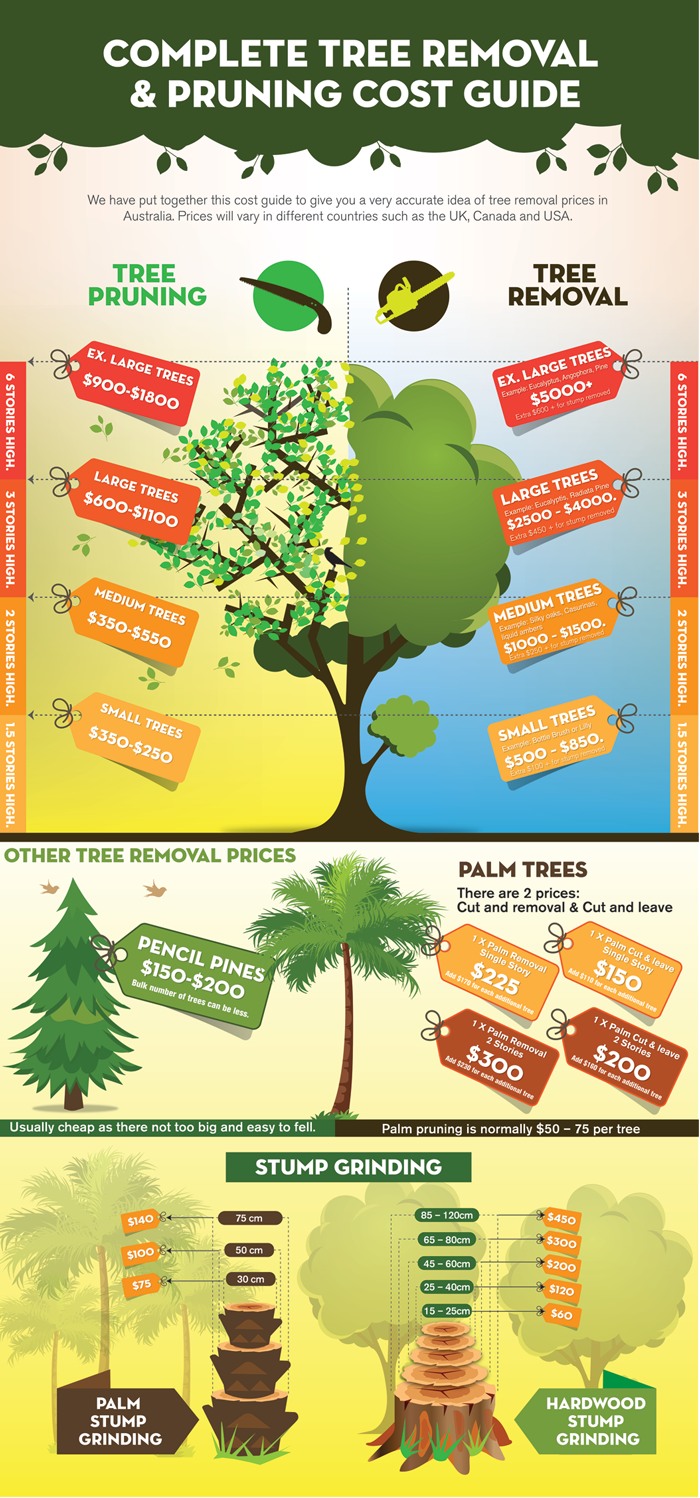Seasonal Tree Care: Just How To Manage Trees Before And After Elimination
Seasonal Tree Care: Just How To Manage Trees Before And After Elimination
Blog Article
Content Author-
When it concerns seasonal tree treatment, making certain proper management prior to and after removal can substantially impact the health and aesthetic appeals of your landscape. By comprehending the needed actions associated with assessing tree wellness and planning for elimination, you can proactively secure your property. However what about the vital practices to follow when the tree is gone? Stay tuned to uncover the vital post-removal treatment actions that will assist you grow a growing and sustainable atmosphere for your trees.
Pre-Removal Tree Care
Before addressing the removal of a tree, it's critical to focus on pre-removal tree treatment. Begin by evaluating the tree's wellness and architectural stability. Look for signs of disease, bug invasions, or any kind of structural issues that might position a safety and security risk during removal. It's important to consult with a qualified arborist to determine the very best course of action.
Trimming dead or infected branches can prevent additional damages to the tree and guarantee a smoother elimination process.
In addition, consider the ecological influence of eliminating the tree. https://average-cost-of-removing43838.like-blogs.com/31081811/the-necessary-benefits-of-hiring-professional-tree-debris-elimination-solutions play an important duty in our ecosystem, so planting a brand-new tree in an appropriate area can aid counter any kind of loss. Make certain that you have the required licenses and authorizations for tree removal, particularly if the tree is secured by neighborhood laws.
Seasonal Maintenance Tips
Evaluating your tree's demands throughout the year is imperative for its health and wellness and durability. To keep your trees in top condition, follow these seasonal upkeep suggestions.
In spring, concentrate on pruning to eliminate dead or broken branches and encourage new development.
Summer season requires normal watering, particularly during droughts, to guarantee your tree stays hydrated.
As autumn strategies, keep an eye out for early signs of disease or anxiety, and take into consideration applying compost to safeguard the roots during wintertime.
In winter season, be cautious when eliminating snow from branches to prevent breakage, and remain to monitor your tree's general health and wellness.
Keep in mind to readjust your treatment routine based on the specific requirements of your tree types and local climate. By staying conscientious and aggressive throughout the periods, you can help your trees flourish and grow for years to come.
Post-Removal Tree Care
To make certain the health of your landscape also after tree elimination, appropriate post-removal treatment is important. After a tree is gotten rid of, it's critical to fill up the continuing to be opening with topsoil and compact it to avoid settling. This will help maintain the honesty of the ground and stop potential hazards in the future.
Think about planting new plants instead of the eliminated tree to recover the balance and aesthetic appeals of your landscape. Consistently water the area to advertise the development of new plants and protect against soil erosion.
Check the surrounding trees for any kind of indications of disease or stress that may have been caused by the gotten rid of tree. Keep isa arborist out for bugs that might've been brought in to the previous tree and take safety nets to shield the staying plant life.
If essential, seek advice from a specialist arborist to examine the effect of the elimination on the surrounding trees and establish any added treatment required. By following these post-removal care steps, you can ensure the continued health and wellness and beauty of your landscape.
Conclusion
To conclude, proactive seasonal tree treatment is essential for keeping the health and wellness and balance of your landscape. By assessing tree health, trimming, and speaking with an arborist prior to removal, you can make sure a risk-free process. After elimination, loading the hole, planting new plants, and routine watering will promote brand-new development and protect against erosion. Keep in mind to inspect bordering trees for disease and look for additional care measures from an arborist to keep your landscape flourishing.
